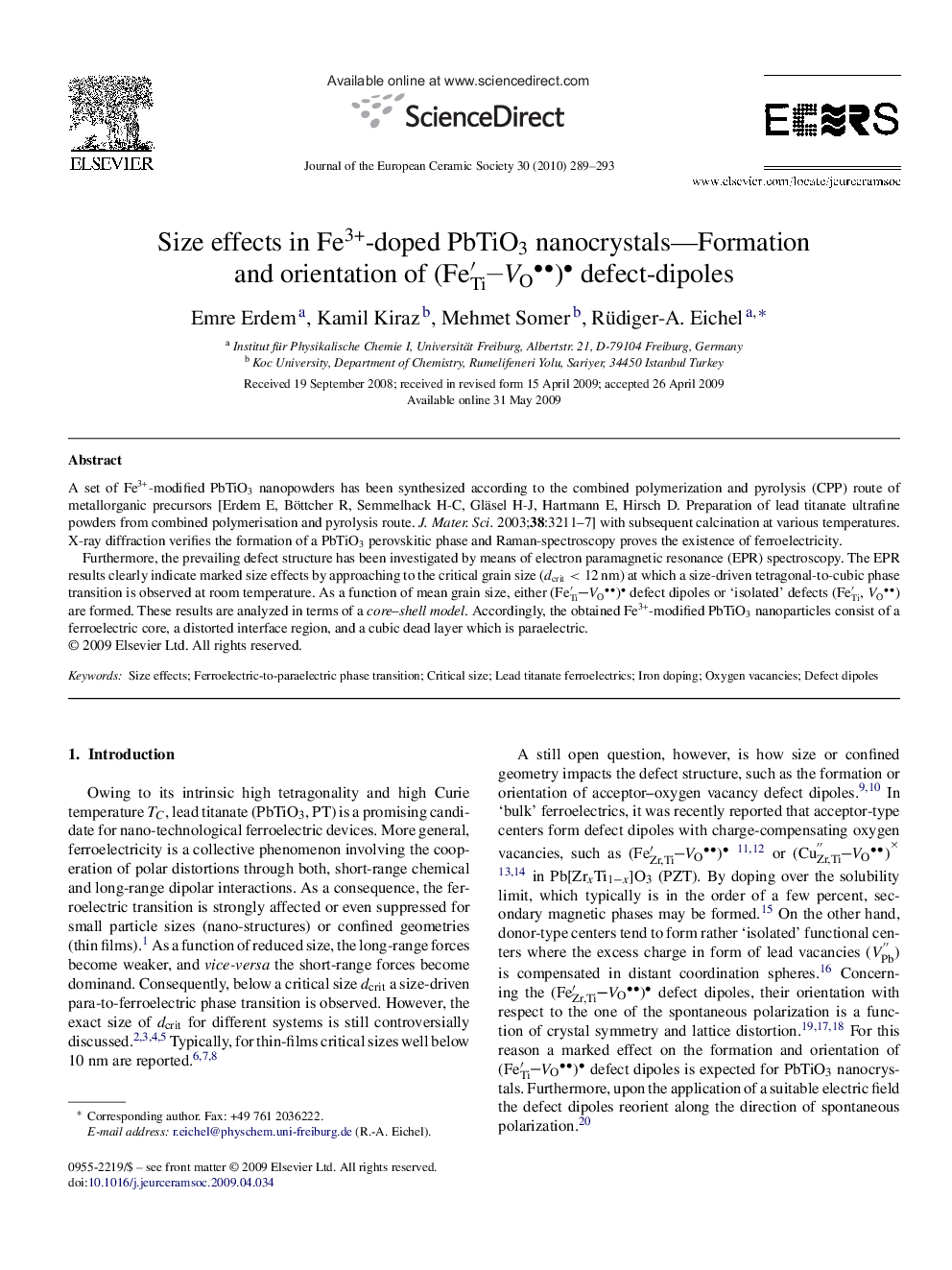| Article ID | Journal | Published Year | Pages | File Type |
|---|---|---|---|---|
| 1474966 | Journal of the European Ceramic Society | 2010 | 5 Pages |
A set of Fe3+-modified PbTiO3 nanopowders has been synthesized according to the combined polymerization and pyrolysis (CPP) route of metallorganic precursors [Erdem E, Böttcher R, Semmelhack H-C, Gläsel H-J, Hartmann E, Hirsch D. Preparation of lead titanate ultrafine powders from combined polymerisation and pyrolysis route. J. Mater. Sci. 2003;38:3211–7] with subsequent calcination at various temperatures. X-ray diffraction verifies the formation of a PbTiO3 perovskitic phase and Raman-spectroscopy proves the existence of ferroelectricity.Furthermore, the prevailing defect structure has been investigated by means of electron paramagnetic resonance (EPR) spectroscopy. The EPR results clearly indicate marked size effects by approaching to the critical grain size (dcrit<12dcrit<12 nm) at which a size-driven tetragonal-to-cubic phase transition is observed at room temperature. As a function of mean grain size, either (FeTi′VO) defect dipoles or ‘isolated’ defects (FeTi′, VOVO) are formed. These results are analyzed in terms of a core–shell model. Accordingly, the obtained Fe3+-modified PbTiO3 nanoparticles consist of a ferroelectric core, a distorted interface region, and a cubic dead layer which is paraelectric.
